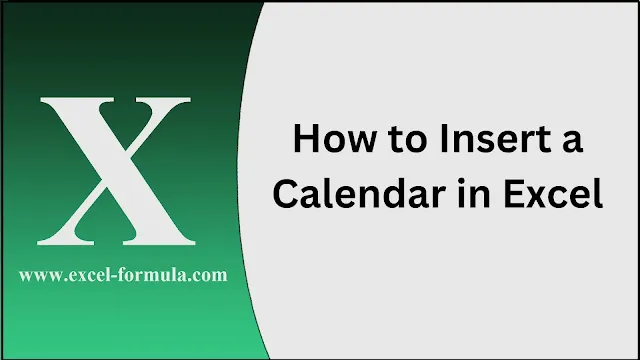Inserting a calendar into Excel can help manage dates, deadlines, and events more efficiently. Whether you’re looking for a drop-down calendar, an interactive version, or a yearly template, this guide will walk you through the steps for different methods.
How to Insert Drop-Down Calendar in Excel Without Date Picker
In some versions of Excel, there isn't a built-in date picker. However, you can still create a functional drop-down calendar using Data Validation:
- Create a List of Dates:
First, create a column with all the possible dates that you'd like to choose from.
- Go to Data Validation:
Select the cells where you want the drop-down calendar to appear. Then, go to the "Data" tab, click on "Data Validation," and choose "List."
- Select the Source for the List:
In the "Source" field, select the range of cells containing your dates and press "OK."
- Test Your Drop-Down Calendar:
Click the drop-down arrow in the selected cells, and you’ll see the list of dates available for selection.
Read:
How to Insert Headers and Footers in Excel
How to Make a Calendar in Excel Without Template
If you prefer creating a calendar from scratch without using templates, follow these steps:
- Set Up Your Spreadsheet:
Create columns for each day of the week (e.g., Monday to Sunday) and rows for the weeks.
- Add Dates:
Fill in the dates for the month, starting with the correct day of the week. Use the =TODAY() function to reference today's date dynamically.
- Customize the Calendar:
Format your cells, add borders, and change font styles to make your calendar more visually appealing. You can also color-code weekends or special events.
- Add Notes or Events:
Leave space in each cell to add notes or events for each day.
Read:
Insert Row in Excel Shortcut Key
How to Make an Interactive Calendar in Excel
Creating an interactive calendar can enhance usability, allowing you to select dates, input data, and automate tasks:
- Insert a Drop-Down for Month Selection:
In one cell, create a drop-down list of months using "Data Validation" > "List." This will let users choose the month to display.
- Use Formulas to Adjust the Dates:
In the cells for your calendar, use formulas like =DATE() and =TEXT() to automatically update the dates based on the selected month.
- Highlight the Current Date:
Use conditional formatting to automatically highlight the current date. Go to "Home" > "Conditional Formatting" and create a new rule with a formula like =A1=TODAY().
- Add Events or Notes Dynamically:
Allow users to add or remove events by simply typing into the corresponding date cells.
How to Create a Yearly Calendar in Excel
A yearly calendar is useful for long-term planning. Here’s how you can create one:
- Set Up the Layout:
Create a grid layout with the months as rows or columns and the days of the month within each. A 12x31 grid can be an effective structure.
- Fill in the Days:
Use the =DATE() function to automatically generate the correct dates for each month. You can reference a starting date like =DATE(2024,1,1) and drag it down to fill in the rest.
- Apply Conditional Formatting:
Use color-coding to mark holidays, weekends, or special dates. You can do this manually or by setting up conditional formatting rules based on dates.
- Freeze Panes for Easy Navigation:
If your calendar is large, freeze the top row or column (go to the "View" tab > "Freeze Panes") to keep your headings visible as you scroll through the calendar.
Insert Calendar in Excel 365
Excel 365 offers easy-to-use templates and features for creating calendars. Here’s how to insert a pre-made calendar:
- Use a Template:
Go to "File" > "New" and search for "calendar." Excel will display several pre-made calendar templates for different purposes (e.g., monthly, yearly, etc.).
- Customize the Template:
Once you’ve selected a template, you can easily modify the dates, formatting, and any other aspects to fit your needs.
- Add Additional Features:
You can make your calendar more interactive by adding conditional formatting, notes, or even linking it with other Excel sheets for task management.
Whether you're looking to insert a simple drop-down calendar or create an interactive, dynamic yearly planner, Excel offers several methods to achieve your goal.
By following these steps, you can create customized calendars for personal use or business needs. With a little formatting and some creative formulas, you can turn Excel into a powerful tool for managing your time and tasks.
